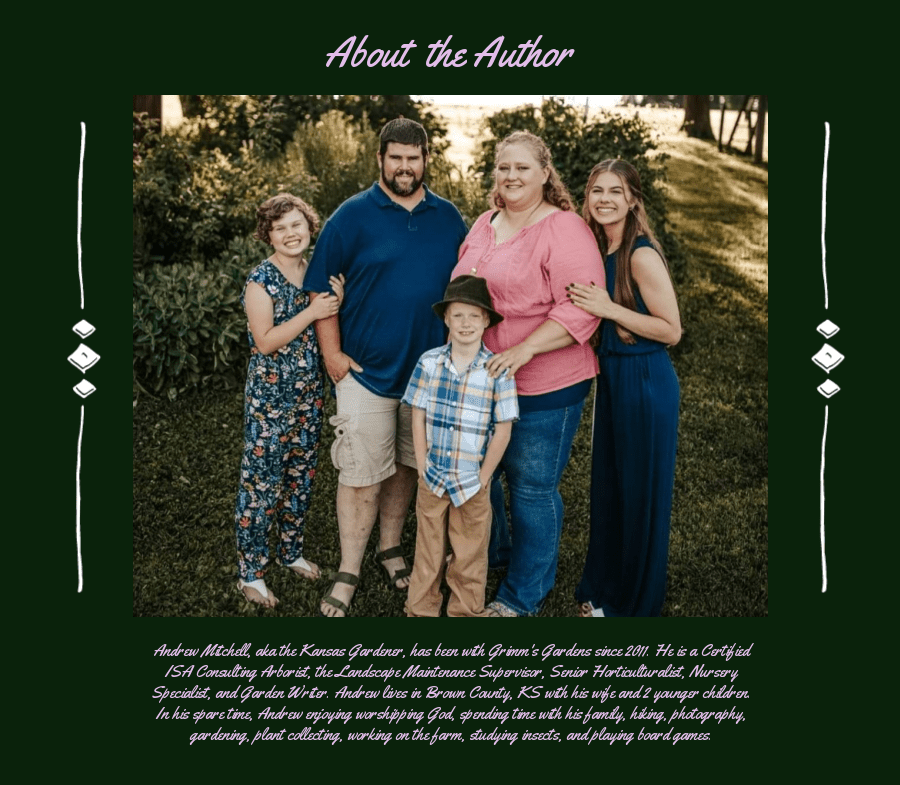Stachys is our June Plant of the Month for 2023. One of my favorite natives and nonnative perennials, ever since I read about them in Piet Oudolf’s book, Planting: A New Perspective. Also, while on a wildflower hike near our local lake, a friend of mine pointed out a native species, Stachys tenuifolia, which is somewhat rare in Kansas, though I have found it in 4 counties.
Also known as betony, Stachys has 27 species native to North America. There are also 10 species commonly adapted to locations around North America. Across the earth, 3 species are commonly grown and selections are made from sports within each species. Stachys is the plant of the month because of its ability to attract pollinators, its toughness in the garden, and its ease of care.
In my own gardens, I have 3 species, including lamb’s ears, wood betony, and smooth hedge-nettle. The last one of those is native to Kansas and the Central Great Plains region. I have it in the woodland border on the eastern side of my property. Let us take a look at the more common betony species and their pollinators. All members of Stachys are in the Mint Family.
Lamb’s Ears – Stachys byzantina
Commonly called lamb’s ears, all the members of this species have silvery, soft, fuzzy leaves. The big differences in cultivars come in the size of the leaves and the shapes of the flowers. Flower colors are either pink or purple, while the flower stalks are a silvery and fuzzy as the leaves. I find that the dried flower stalks are prickly, and I like to cut them back after flowering to keep the plant tidy.
Lamb’s ears are a ground cover plant, spreading out more than the size mentioned on the tag. I have had customers use this in Victorian style gardens, letting it spread over a wide area. One client had an individual plant which spread 4 feet wide and 12 feet long. The most common pollinators I have seen on this are bumblebees.
Cultivars of Lamb’s Ears
- ‘Helene von Stein’ is a commonly found cultivar with silvery soft leaves that grow thickly to a height of 10 inches. One of the most important things to keeping lamb’s ears healthy is to limit water. They like it dry. It is hardy in Zones 4 to 9.
- ‘Cotton Boll’ is an interesting cultivar which has flowers which are formed in ball shapes, silvery-white with purple flowers. It is hardy in Zones 4 to 8.

Wood Betony – Stachys officinalis
This is where many of the common cultivars, such as ‘Hummelo’ come from. Wood betony is native to Europe and Asia, and is commonly used in gardens across the world. Thanks to Piet Oudolf, wood betony has become more common in the United States and areas of western Europe. The plant is clump forming, and does not make a good groundcover. However, in my garden at least, wood betony reseeds and spreads a bit around, especially in my Sunny Cottage Garden.
Cultivars of Wood Betony
- ‘Hummelo’ was the 2019 Perennial Plant of the Year. The flowers are violet-purple, growing about 16 inches tall above a rosette of dark green leaves. Plants grow around 12 inches wide.
- ‘Pink Cotton Candy’ has soft pink flowers above 12 inch wide plants. I love the color of this cultivar and have it as well as ‘Hummelo’ in my garden.
- ‘Summer Romance’ was a sport from ‘Hummelo’ which has neon pink flowers instead of purple. It grows 16 inches tall by 12 inches wide.
- ‘Densiformis’ is a short, dwarf variety, only growing 12 inches tall and wide with dark purple flowers.

Smooth Hedge-nettle – Stachys tenuifolia
The easiest for me to find of the North American native Stachys in the Central Great Plains. It has soft pink flowers which are visited by bumblebees primarily. Small clumping plants grow best in part shade, or protection from afternoon sun.

Companion Plants of Betony
In the garden, betony does not stand out as a specimen plant, so mix it well with other perennials, both native and nonnative. I have seen Lamb’s ears grown side by ide with ‘Hummelo’ for a nice look, but it does good to add in other plants as well. Plant any of the following plants next to or with betony, or try some of your own favorites.
- Ornamental Onion ‘Milennium’ & ‘Serendipity’
- Coreopsis ‘Creme Brulee’
- Cranesbill ‘Rozanne’
- Blue Grama ‘Blonde Ambition’
- Butterfly Milkweed
- Lavender
- Perennial Salvia
- Vernonia ‘Iron Butterfly’
- Liatris ‘Kobold’ & ‘Alba’
- Penstemon ‘Onyx & Pearls’
- Maltese Cross
Conclusion
Stachys is a great plant not only for cottage gardens but also for butterfly gardens. Bees and butterflies go to the flowers, which are members of the mint family. By adding some stachys to your garden you will increase your garden diversity and add spring color which will favor bees and butterflies.
Happy planting!





Great information. Thank you.